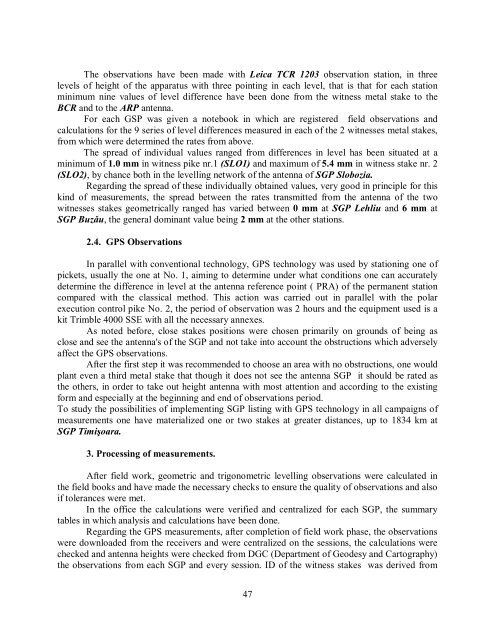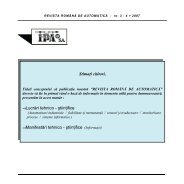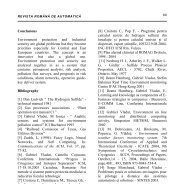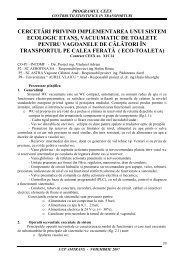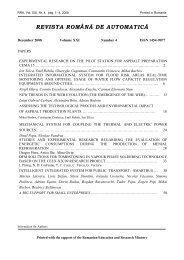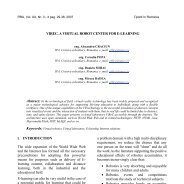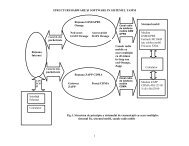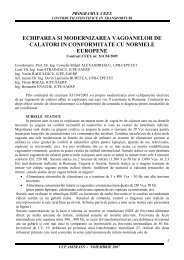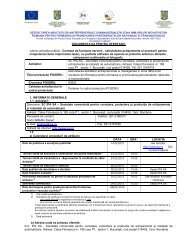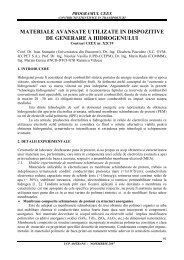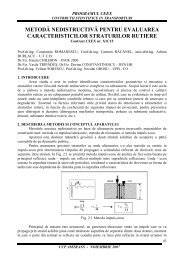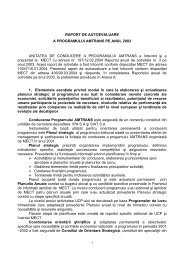0_ CUPRINS - IPA SA
0_ CUPRINS - IPA SA
0_ CUPRINS - IPA SA
You also want an ePaper? Increase the reach of your titles
YUMPU automatically turns print PDFs into web optimized ePapers that Google loves.
The observations have been made with Leica TCR 1203 observation station, in three<br />
levels of height of the apparatus with three pointing in each level, that is that for each station<br />
minimum nine values of level difference have been done from the witness metal stake to the<br />
BCR and to the ARP antenna.<br />
For each GSP was given a notebook in which are registered field observations and<br />
calculations for the 9 series of level differences measured in each of the 2 witnesses metal stakes,<br />
from which were determined the rates from above.<br />
The spread of individual values ranged from differences in level has been situated at a<br />
minimum of 1.0 mm in witness pike nr.1 (SLO1) and maximum of 5.4 mm in witness stake nr. 2<br />
(SLO2), by chance both in the levelling network of the antenna of SGP Slobozia.<br />
Regarding the spread of these individually obtained values, very good in principle for this<br />
kind of measurements, the spread between the rates transmitted from the antenna of the two<br />
witnesses stakes geometrically ranged has varied between 0 mm at SGP Lehliu and 6 mm at<br />
SGP Buzău, the general dominant value being 2 mm at the other stations.<br />
2.4. GPS Observations<br />
In parallel with conventional technology, GPS technology was used by stationing one of<br />
pickets, usually the one at No. 1, aiming to determine under what conditions one can accurately<br />
determine the difference in level at the antenna reference point ( PRA) of the permanent station<br />
compared with the classical method. This action was carried out in parallel with the polar<br />
execution control pike No. 2, the period of observation was 2 hours and the equipment used is a<br />
kit Trimble 4000 SSE with all the necessary annexes.<br />
As noted before, close stakes positions were chosen primarily on grounds of being as<br />
close and see the antenna's of the SGP and not take into account the obstructions which adversely<br />
affect the GPS observations.<br />
After the first step it was recommended to choose an area with no obstructions, one would<br />
plant even a third metal stake that though it does not see the antenna SGP it should be rated as<br />
the others, in order to take out height antenna with most attention and according to the existing<br />
form and especially at the beginning and end of observations period.<br />
To study the possibilities of implementing SGP listing with GPS technology in all campaigns of<br />
measurements one have materialized one or two stakes at greater distances, up to 1834 km at<br />
SGP Timişoara.<br />
3. Processing of measurements.<br />
After field work, geometric and trigonometric levelling observations were calculated in<br />
the field books and have made the necessary checks to ensure the quality of observations and also<br />
if tolerances were met.<br />
In the office the calculations were verified and centralized for each SGP, the summary<br />
tables in which analysis and calculations have been done.<br />
Regarding the GPS measurements, after completion of field work phase, the observations<br />
were downloaded from the receivers and were centralized on the sessions, the calculations were<br />
checked and antenna heights were checked from DGC (Department of Geodesy and Cartography)<br />
the observations from each SGP and every session. ID of the witness stakes was derived from<br />
47


